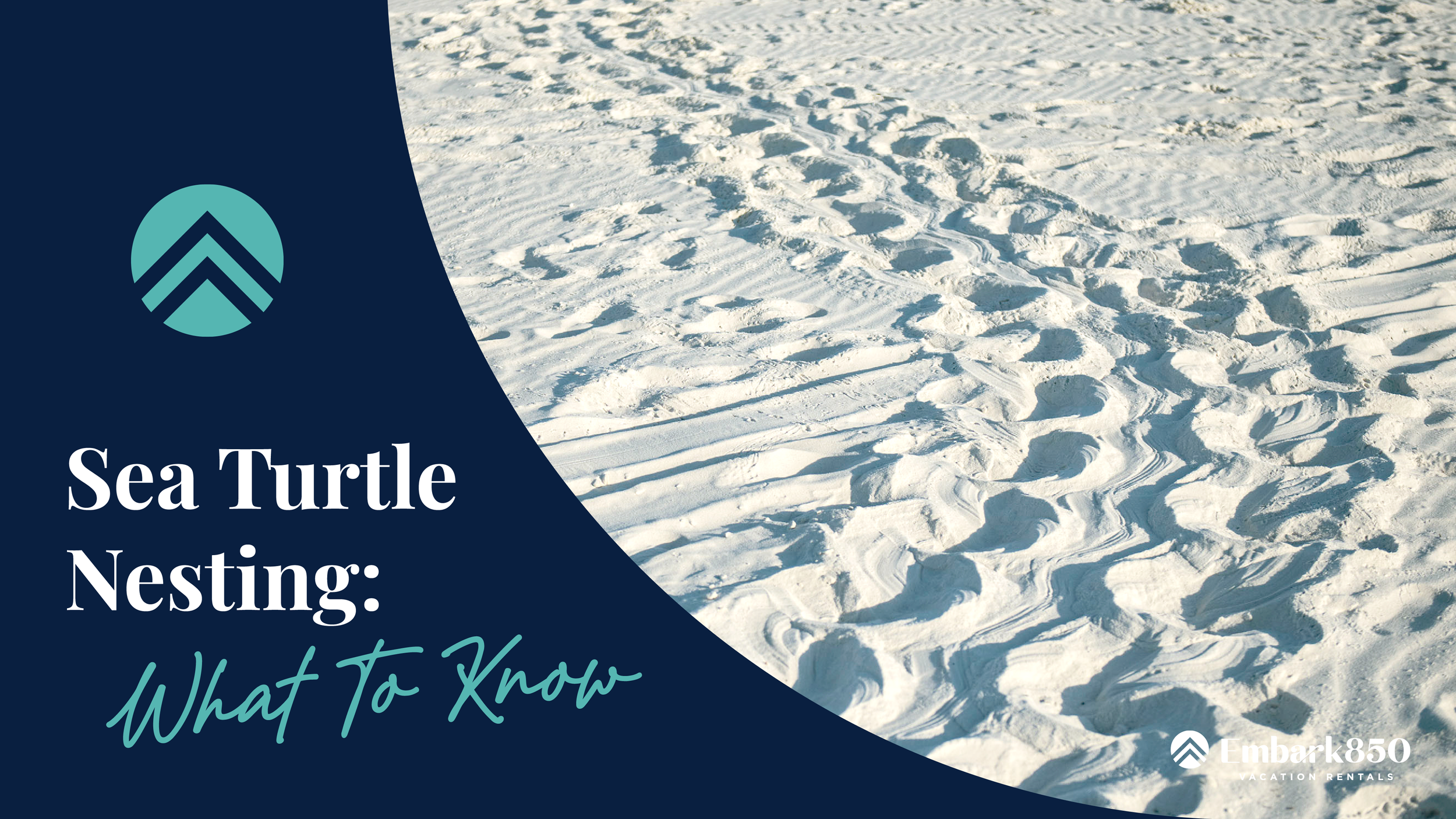Sea Turtle Nesting: What to Look for and Mistakes to Avoid in Santa Rosa Beach
Picture this: you're strolling along the beautiful beaches of Santa Rosa Beach, the sun warming your skin, when suddenly you notice peculiar tracks in the sand. You've just stumbled upon one of the area’s most incredible natural wonders—sea turtle nesting season in Florida.
From the beginning of May until the end of October, something extraordinary happens here—our sandy shores become a crucial haven for nesting sea turtles. Beachgoers have a rare chance to observe these captivating creatures and help ensure they remain part of our coastal ecosystem for generations to come.
When is sea turtle nesting season in Santa Rosa Beach?
If you’re planning a 30A summer getaway, you may have the opportunity to witness sea turtle nesting season firsthand. This natural event typically runs from May to October. Female sea turtles, including species like the loggerhead, green, and leatherback, come ashore to lay their eggs in the sands of Florida’s beaches before returning to the sea.
Sea turtle season isn’t just significant, it’s monumental. The state harbors nearly 90% of all sea turtle nestings. In the U.S. Florida also has the highest number of loggerhead nestings globally, with an average of 103,342 each year.
With such a critical role in sea turtle conservation, every action we take on these beaches can have a profound impact.
Mistakes to avoid: Protecting nesting sea turtles in Florida
It's crucial to tread carefully. What are the common yet often overlooked mistakes that can impact these endangered creatures? Consider these tips based on guidelines from the Sea Turtle Conservancy:
● Leaving trash and beach gear behind: Litter and obstacles on the beach are some of the biggest threats to sea turtles. Pick up litter and remove beach items like furniture, umbrellas, toys, and buckets that might obstruct or confuse sea turtles.
● Disrupting natural beach conditions: Playing in the sand can unintentionally harm turtles. Level sandcastles and fill in holes before you leave to create a safe path for our shelled friends.
● Using flashlights and cameras at night: A common mistake is using flashlights or flash photography on the beach at night. This can disorient and scare sea turtles.
● Getting too close to wildlife: It’s easy to get excited and want a closer look, but approaching, touching, or interfering with turtles, their hatchlings, or their nests is harmful. Always keep plenty of distance between you and sea turtles.
● Choosing disruptive beach activities: Activities like driving on the beach or lighting bonfires might seem harmless but can be disruptive and damaging to turtle nests.
By avoiding these mistakes, you play a crucial role in safeguarding nesting sea turtles and ensuring their future survival.
What to do if you see a sea turtle
Encountering a sea turtle is a moment of awe and wonder. But in this rare and special encounter, what should you do? Your instinct might be to get closer or help, but you must maintain a respectful distance and keep noise to a minimum.
These animals are slow-moving by nature and often pause—this behavior is normal and doesn't indicate they need help. Interfering, even with good intentions, can cause stress and disorientation. This is particularly important because distractions can lead a nesting female to abandon her task or cause a hatchling to lose its way to the sea.
No matter how tempting it may be to snap a photo or get a better look, don’t use artificial light, such as flashlights or camera flashes. It can mislead the turtles, causing them to head in the wrong direction.
If you see a sea turtle in distress, such as stranded, appearing dead, or a disoriented hatchling, report it to the Florida Fish and Wildlife Conservation Commission (FWC) at 1-888-404-FWCC or *FWC from your cell phone. The same applies if you witness anyone disturbing a sea turtle or its nest.
Common signs to look out for during nesting season
The beaches are filled with signs and clues of these magnificent animals. When you're out enjoying the sun-drenched beaches this summer, keep an eye out for these classic indicators of sea turtle nesting:
● Turtle tracks: Look for unique patterns in the sand that resemble tiny tire tracks, a sign of sea turtles coming ashore.
● Nesting clues: Watch for unusual mounds of sand or areas where vegetation is disturbed, which can signal potential nesting sites.
● Marked areas: Notice areas marked off with stakes and tape, a measure to protect turtle nests.
Sea turtles generally come ashore under the cover of night, but you might still catch a glimpse of them after sundown. Later, during sea turtle hatching season in Florida, it’s a magical site to see the tiny shelled babies making their way to the ocean.
If you’re fortunate enough to witness this, remember to keep at least a 10-foot distance to avoid disturbing them. Stay behind the animal and out of their line of sight so you don’t cause any stress or fear.
Guided sea turtle walks and educational opportunities
Guided sea turtle walks in Santa Rosa Beach can be a fun (and responsible) way to experience the wonder of sea turtle nesting. Programs like public hatching releases or nest hatch success evaluations are also great for getting a glimpse into the life of a sea turtle.
Check out the South Walton Turtle Watch and the Friends of South Walton Sea Turtles for opportunities to get involved.

